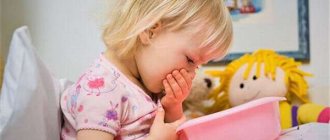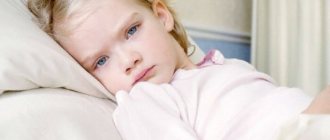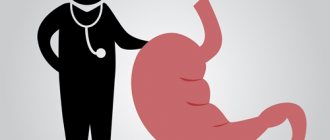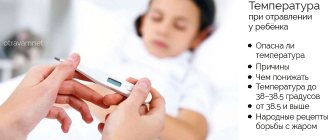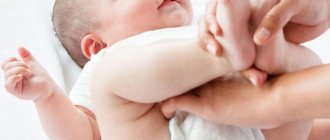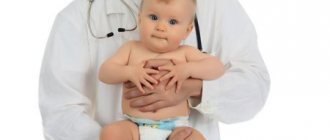A small child is not only happiness in the family, but also a huge amount of trouble. The baby has not yet developed full-fledged immunity, he is not yet adapted to life in our conditions, so a wide variety of problems with his health may arise. The baby’s digestive system is especially often affected, so it is necessary to pay special attention to his stool and reaction after feeding. Problems especially often occur with artificial feeding, because we are often offered formulas of inadequate quality, but problems can also arise when breastfeeding.
One of the most common phenomena is foul-smelling green diarrhea in infants. Such problems can arise at any age, from 3 months to six months. A change in stool color is one of the main indicators that there are some problems in the digestive system. Leading experts pay a lot of attention to this problem, including the well-known Dr. Komarovsky, who dedicated one of his programs. Today we’ll talk about why green diarrhea may appear in a child at different ages and what to do in this case.
What is diarrhea
With repeated excretion of stool in liquid form, doctors diagnose diarrhea. This is not an independent disease, but a symptom characteristic of pathologies of the intestines, stomach or pancreas. He indicates to the specialist that the person has had a disruption in the natural process of water absorption into the rectal mucosa, and destruction of the bonds between electrolytes.
Liquid green stool is conventionally divided into two subspecies. Acute diarrhea lasts no more than 2 weeks and accompanies the infection. In the chronic form, greenish-colored feces are released in a volume of at least 300 grams per day, and the number of visits to the toilet reaches 6–8 times. In this case, a sign of a serious disorder is a large number of undigested pieces of food.
Possible reasons
Why might a child develop green diarrhea? The reasons can be very different, they depend on the diet, age and health of the baby.
As soon as you notice this unpleasant phenomenon, you first need to try to understand why it happened. Some provoking factors are normal and should reassure parents, while others will indicate problems that will have to be resolved in the doctor’s office.
Reasons that should not cause concern
- Meconium
The peculiarity of the stomach in the first 10 days of a child’s life explains the dark olive color of the stool.
- Formation of the gastrointestinal tract
A greenish tint in the first year of life during breastfeeding is due to the underdeveloped gastrointestinal tract in newborns. Over time, his work returns to normal.
- Breast-feeding
The liquid consistency is a consequence of the baby’s absorption of the mother’s fore-milk, low-fat breast milk.
- Features of the mother's breast
If at 1 year of age the stool remains the same liquid and green, this may be due to tight breasts or inverted nipples in the mother. In this case, the formation of stool may take longer.
- Maternal nutrition during breastfeeding
If a nursing mother’s diet contains a lot of carbohydrate-containing foods and green vegetables (you can find the nursing mother’s menu here), this can cause green diarrhea in the baby. It can be caused by spinach, broccoli, parsley, dill, green apples and pears, and cucumbers.
- Artificial feeding
The use of milk formulas with a high iron content: NAN, Nutrilon and others.
- Introduction of complementary foods
The first acquaintance with foods such as apples, broccoli, pears, and sweet porridge can lead to a change in the color of children's feces.
- Nutritional Features
In older children (3-5 years), when the gastrointestinal tract is already fully formed, green diarrhea can be a consequence of poor nutrition. Namely: excessive consumption of carbohydrates (chocolate, sweets, baked goods, confectionery) and green foods (apples, pears, sorrel, dill, parsley, onions, spinach, lettuce).
Dangerous reasons
- Dysbacteriosis due to improper introduction of complementary foods, previous intestinal infection, somatic disease, which were treated with antibiotics.
- Intestinal infections: shigellosis, escherichiosis, yersiniosis, rotavirus infection, campylobacteriosis and others.
- Dysentery.
- Salmonellosis due to consumption of raw or poorly thermally processed chicken eggs and fish.
If a child has green diarrhea, this fact cannot be ignored. It is necessary to carefully analyze the situation and draw initial conclusions about what could have caused such a stool.
If they are related to age characteristics and nutrition, and fit into the norms, there is no need to worry. But if you suspect a health problem, you should consult a doctor immediately. The accompanying symptoms will help clarify the situation.
Causes of green diarrhea in children
Green diarrhea in a child begins suddenly and may be accompanied by complaints of abdominal pain, vomiting and other unpleasant symptoms. In most cases, the cause is hidden in infection with different types of pathogens:
- pathogenic fungi (yeast);
- bacteria;
- enteroviruses.
Such species provoke the development of intestinal infections associated with the activity of staphylococci, streptococci, and Pseudomonas aeruginosa. Upon contact with the intestinal mucous membranes, their active reproduction begins. They not only change the acidic environment of the epithelium, but also provoke the death of beneficial microflora, which is unstable in infancy.
Dysbacteriosis
Green diarrhea in children of the first year of life often occurs due to intestinal dysbiosis. The disease is increasingly being diagnosed in bottle-fed babies. It is associated with an imbalance of microflora and a significant increase in colonies of pathogenic microorganisms. At this age, the causes of pathology and diarrhea are as follows:
- improperly selected nutrition;
- allergy to milk proteins;
- antibiotic treatment.
In this case, the child’s green, loose stool is replaced by prolonged constipation, problems with bowel movements, and painful spasms. The disease can only be determined by a special stool analysis for the level of bifidobacteria, lactobacilli, and their concentration in the rectum.
Staphylococcus aureus
The dangerous bacterium is very common in the environment. It settles on the mucous membranes of the nose, genitals, and penetrates the intestines through the anus or esophagus. It is easy to infect a baby with daily care, during breastfeeding, or during the passage of the fetus through the birth canal. If a child has green diarrhea without fever, peeling or a rash on the skin of the abdomen, the pediatrician may refer you for stool tests.
The bacterium gradually infects the child’s internal organs and parasitizes their membranes. It is difficult to destroy by boiling or freezing. But its presence in the body negatively affects well-being:
- the child has diarrhea with greens several times a day;
- immunity is greatly reduced;
- food is practically not digested;
- there is a lack of vitamins and minerals.
Dysbacteriosis
The intestines of every person are home to countless microorganisms that make up their microflora. The situation is the same in infants, although immediately after birth their body is absolutely sterile. At the same time, the microflora is not constant; its composition can change for a variety of reasons. If this happens, both an adult and a small child may face a problem such as bowel dysfunction.
Dysbacteriosis is a disorder in which the quantitative and qualitative composition of the microflora changes. The reasons for this are fairly standard:
- deterioration in the quality of the immune system;
- improper or poor quality nutrition;
- taking any antibiotics.
The last point should be discussed in a little more detail. Some parents give their children antibiotics without consulting a specialist, which should never be done. Often, taking antibiotics is not justified at all (for example, when teething with an increase in temperature). Forget about self-medicating infants! Any medications are prescribed only by a specialist.
If the number of beneficial microorganisms decreases, it becomes possible for harmful bacteria to multiply. In this case, the following phenomena may be observed:
- Abnormal stool.
- Bloating.
- Abdominal pain and intestinal colic.
- Manifestations of allergies, etc.
Diagnosis of dysbiosis is carried out using stool analysis. If it turns out that the number of harmful microorganisms is higher than normal, antibiotics may be prescribed. If such phenomena are observed after antibiotics, the specialist will prescribe probiotic or prebiotic agents. Sorbents are used to remove accumulated waste products of harmful bacteria. It is easiest to restore a baby's microflora when breastfeeding. If this is not possible, special means are used.
Symptoms and dangers of green diarrhea in children
Many parents self-medicate, trying to normalize the baby’s condition with medications of their own choice. Therefore, diarrhea threatens to develop into a chronic form. To prevent inflammation, you need to pay attention to the following symptoms:
- the child has green diarrhea;
- I have a stomachache;
- the baby twists its legs, presses them to the navel;
- anxious and short sleep gives way to hysterics;
- vomit;
- temperature rise above 38°.
The presence of mucus indicates the development of an intestinal infection; rashes often appear with food allergies. Any symptoms require careful observation and mandatory treatment. Dark green diarrhea in a child can provoke the development of severe complications:
- Excessive loss of fluid during loose stools can lead to dehydration. This dangerously increases blood density and negatively affects the functioning of the brain, cardiovascular system, and kidneys.
- If food is not digested well enough, the body does not receive enough nutrients. The baby becomes lethargic, drowsy, and lacks energy for games, communication, and learning new knowledge.
- Growth slows down and weight loss begins.
Where to start treatment
Loose stools with a green tint cannot be ignored. Even if it is not caused by anything serious, it is still worth starting treatment.
When diarrhea occurs, it is recommended that the patient be given a saline solution, for example, Regidron, Trihydron, Gidrovit, to prevent dehydration.
You can prepare the solution yourself at the rate of 1/3 level teaspoon of table salt, ½ teaspoon of sugar per 1 glass of boiled water. The water should be warm. It is correct to give the solution little by little and often. The amount depends on the child’s weight, on average one liter for 3–4 hours.
Sorbents
They are necessary if diarrhea is caused by poisoning. Smecta is considered the most popular medicine for children. This is an inexpensive preparation of natural origin, obtained from white clay.
A sorbent such as Filtrum-Sti is also suitable for children. It is quickly absorbed in the intestines, does not injure it and does not cause allergies.
Activated carbon and Polyphepan are available to most people and can be used by children from birth.
We suggest you find out how long after you take the second fluconazole tablet
With the help of absorbent drugs, toxins and harmful microflora are removed. They have a positive effect on the mucous wall of the digestive tract, creating favorable soil for the restoration of healthy microflora. Children over 2 years old, instead of these drugs, can be given a decoction of rice, which removes toxins from the body and has a good effect on the stomach.
Nutrition
To restore intestinal function, proper nutrition plays an important role. The basis of the diet should be whole grains. Although it is recommended to exclude raw fruits and vegetables, some are still healthy and necessary. These are apples, bananas, dried fruits. They are rich in potassium, pectin and help replenish the loss of vitamins. Potatoes contain a lot of starch and have a binding effect.
Quince and persimmon have an astringent and cleansing effect in the intestines. Lean meat and fish will be an addition to the diet. Of course, all these products must be properly prepared to retain all their beneficial properties.
It is forbidden! xxFootnotes If, in addition to green, loose stools, the child also has a stomach ache, is vomiting and has a fever, then it is strictly forbidden to offer him medications with an analgesic effect. They will make the existing picture unclear, and it will be more difficult for the doctor to make a diagnosis. xxFootnotesx
How to provide first aid to a child
If a child has green diarrhea and fever, it is necessary to call an ambulance to alleviate the baby’s condition as follows:
- Rinse the stomach with clean water at room temperature, induce vomiting by pressing on the base of the tongue.
- If there is no vomiting, give clean water without gas.
- Avoid any foods, milk, or sweets until consulting a doctor.
- A one-year-old child is given a light formula of no more than 50 ml at a time, being careful not to overload the stomach.
- At temperatures above 38°, you can give a dose of Paracetamol or Ibuprofen.
- Wipe the baby with water, moisten your lips more often.
It is possible to select a more precise treatment only after tests for microflora, staphylococcus, and ultrasound of internal organs. It is necessary to exclude gastric bleeding, an attack of appendicitis or severe indigestion.
Diagnostics
In the hospital, based on the results of laboratory tests, doctors will more accurately determine why the child has green stool, whether this is normal or pathological. If necessary, the following diagnostic techniques will be performed:
- stool analysis for dysbacteriosis;
- bacterial culture of feces and vomit;
- sigmoidoscopy - visual examination of the rectum;
- Analysis of urine;
- coprogram;
- general blood analysis;
- RNGA of blood to detect antibodies to salmonella.
During the diagnosis, it will be found out why the child has green stool, whether it is an indicator of any disease or not. If health problems are detected, treatment will be prescribed. If not, the doctor can only advise the parents what to do in the future so that the color of the children's stool becomes normal.
Features of the treatment of green diarrhea in children
Vomiting and green diarrhea in a child can lead to dehydration, so it is necessary to monitor the condition and well-being. In newborns, when the water balance is critically low, the “fontanel”, an unossified area on the top of the head, begins to sink. Blood vessels appear in it, their pulsation becomes noticeable.
How to treat green diarrhea in a child depends on the situation and symptoms:
- For intestinal infections, special antibiotics are needed: Enterofuril, Loperamide.
- To reduce intoxication, sorbents are recommended: Polysorb, activated carbon, Atoxyl.
- To eliminate dehydration, it is necessary to give a small portion of special drugs for rehydration every 15–30 minutes: Regidron, Reoxolan, Glucosolan.
- Green diarrhea and fever are very debilitating, so you can give antipyretic drugs 2 times a day: Panadol, Paracetamol, Nurofen.
Dysbacteriosis requires the use of special agents that normalize the microflora. If a child's green diarrhea without fever was caused by the development of this disease, for several weeks the baby should be given Linex, Bifidumbacterin, Acipol, Biobakton, Bifiform, and fermented milk mixtures from medicinal series should be introduced into the diet.
Treatment according to Komarovsky
Our beloved children's pediatrician Komarovsky claims that diarrhea in infants is treated, first of all, by restoring the water-salt balance. Under no circumstances should dehydration be allowed to occur, which poses a particular danger to newborns.
You must memorize its main signs: lethargy, dark urine and a decrease in the amount of urination, dark circles under the eyes, dry skin, in children under 6 months - retraction of the fontanel.
Of all the drugs for treating microflora, the doctor trusts Smecta the most. It is relatively safe and is indicated for babies from 1 month of age. According to Komarovsky, Smecta quickly restores the intestinal mucosa, removes toxins and acts as an absorbent due to its astringent properties.
Nutrition for diarrhea
If you have indigestion, you should choose a light and balanced diet. All food should be in the form of a light puree without butter or sour cream. Fats, sweet desserts, and any foods that can increase fermentation in the intestines are temporarily excluded: smoked foods, cabbage, yogurt, and baked goods. The best options to reduce green diarrhea with mucus in a child:
- steamed chicken meat, ground into pate;
- boiled vegetables (potatoes, carrots, broccoli);
- steam omelettes and soufflés;
- rice or oatmeal;
- low-fat broth;
- egg yolk.
After a period of exacerbation with diarrhea, the child’s diet is supplemented with baked vegetables and fruits, fermented milk products, jelly or fruit juice from seasonal berries are gradually introduced. Instead of sweets, dried bread, bagels or crackers are allowed.
Features of the norm
To understand when it is necessary to treat green loose stools in an infant, you need to understand what can be considered normal and what is pathology. In newborn babies, the consistency and color of stool can change significantly during the first weeks of life.
During the first week, the baby may have dark green, even black stool. This is normal, because meconium comes out. The stool may be thick, runny, or even slimy. There is no need to take any measures or worry. Soon the baby's digestive system adapts, and the baby's feces return to normal. We also recommend that you read: what to do if a baby has diarrhea?
After about another week, the stool will become light green in color, and after 1–3 months it will turn mustard.
Greenish feces in some cases can also be considered normal, especially if the baby is breastfed.
Traditional methods and recipes
Green diarrhea in a one-month-old baby should be treated only under the supervision of a specialist. For school-age children, taking medications can be supplemented with traditional methods. At home, Regidron for dehydration is replaced with the following composition:
- 0.5 l of boiled water;
- 15 g sugar;
- 10 g salt.
After stirring, the composition is drunk in small portions of 100 ml at intervals of 20–30 minutes. Useful plants from which it is recommended to prepare a decoction for drinking against diarrhea:
- oak bark;
- pharmaceutical camomile;
- blueberries;
- flax seeds;
- chicory.
What you should absolutely not do
Until the causes of green diarrhea are clarified, it is strictly prohibited:
- give the child medications, especially antibiotics;
- stop diarrhea using traditional methods;
- limit the consumption of water, compotes and any other liquids;
- force-feed a child in the absence of appetite;
- ignore the symptom.
All that can be done in case of such a disorder is to contact your local pediatrician. If the child's condition rapidly deteriorates, call an ambulance.
If a baby has green diarrhea for several days in a row, it is necessary to urgently call a pediatrician.
Before the pediatrician arrives, you should perform simple steps to alleviate the child’s condition:
- give an electrolytic solution to drink, not plain water;
- if the baby’s age allows, then give him an adsorbent;
- continue breastfeeding, slightly reducing the daily intake;
- to prevent the formation of cracks, lubricate the child’s anus with cream or oil after each bowel movement;
- if the body temperature is above 38 degrees, then bring it down with paracetamol.
Treatment of diarrhea in an infant comes down to improving bowel function and normalizing fluid balance in the body. The doctor prescribes treatment after identifying the cause of diarrhea.
As a rule, these are antibiotics, adsorbents, and medications that improve the intestinal microflora. If dehydration is suspected, the baby and mother are hospitalized.
It is possible to prevent the occurrence of green diarrhea in an infant if the nursing mother follows the rules of a healthy diet and lifestyle.
The house where the baby grows must be clean: bottles, pacifiers and toys must be disinfected. When walking, you should always have sterile wet wipes, clean drinking water and a spare pacifier with you.
Green diarrhea in an adult and a child, which is accompanied by a high temperature, indicates a dysfunction of the intestines, liver or stomach. In order not to harm the patient, you should not take a number of actions at home:
- If you have abdominal pain, do not give painkillers, which can greatly alleviate the symptoms and slow down the correct diagnosis. Antipyretic medications can only be given at very high temperatures.
- Do not give your baby antibiotics of any group, especially tetracyclines, which are often used by adults for diarrhea. For young children, these drugs are considered very toxic and can lead not only to a deterioration in their general condition, but also to hearing and vision impairment.
- Do not treat your baby with medications that are intended for adults and adolescents. Even in small doses, such medications will not give the desired effect, but they can cause poisoning.
- Do not force your child to eat if he has no appetite. Even your favorite and delicious foods can cause repeated bouts of vomiting.
- Do not limit fluid intake for fear that this may provoke bouts of diarrhea and vomiting. Drinking not only prevents dehydration, but also helps to quickly remove toxins from the body;
- Do not give various vegetables and fruits, which will cause stagnation and fermentation in the stomach;
- Do not place a cold or hot heating pad on the abdominal area.
Upon the doctor's arrival, he is told about all the medications that were given to the child, including adsorbents. The specialist is informed about the baby’s complaints and how long the disease has lasted.
Prevention
In most cases, green diarrhea is a consequence of the activity of bacteria and microorganisms. Therefore, parents should carefully monitor the hygiene of infants and adhere to the following recommendations:
- Thoroughly wash and treat feeding utensils and wash your breasts before expressing.
- Select formulas and complementary foods together with your doctor.
- Wash and disinfect toys more often, and keep the room clean.
- Do not overload children’s stomachs with fatty, smoked and fast food products.
From preschool age, parents need to be shown by personal example how to keep their hands, body, and clothes clean. Proper nutrition and a balanced menu in accordance with age will help avoid digestive problems.
Preventive measures
Preventing a disease is easier than treating it. Parents need to know the rules that will help avoid gastrointestinal disorders, as a result of green diarrhea.
- A nursing mother needs to adhere to proper nutrition. Avoid eating allergenic foods. Do not eat fatty, spicy foods. Do not take medications without consulting your doctor.
- A newborn baby on artificial feeding suffers from diarrhea if the formula is not suitable. After consulting with your pediatrician, you can choose the appropriate diet.
- Greenish diarrhea may indicate intolerance to the product. Therefore, complementary foods should be introduced gradually and carefully in small portions in a puree state.
- Parents should not lick baby pacifiers or spoons. Thus, the infection spreads from an adult to a baby.
- The diet of preschoolers should be balanced.
- Older children need to be taught personal hygiene rules. Make sure that your hands are clean and that foreign objects do not get into your mouth.
Every responsible parent worries about the health of the baby. And such a phenomenon as green diarrhea worries caring parents. The main thing is not to panic, but to find out the cause of the symptom by notifying the pediatrician about what is happening. The doctor will definitely help to identify the disease that caused the symptom and prescribe treatment for the child in accordance with the age and characteristics of the body.
As preventative measures for green diarrhea, it is important to follow these steps:
- A nursing mother should follow a diet and refuse (if possible) from taking antibiotics.
- If your baby is fed with store-bought formulas and cereals, it is recommended to talk to your pediatrician about the best product for him.
- Complementary foods should be introduced in stages. If green diarrhea has become a “response” to a particular product, then it is better to stop using it for now. It is worth waiting until the gastrointestinal tract has formed a little.
- After the child reaches three years of age, you should try to normalize the baby’s nutrition. Avoid giving too many greens and high carbohydrate foods.
- It is important to carefully process products.
- You should never lick, or allow others to do so, your baby's pacifiers, spoons and nipples. Adults, along with their own saliva, can transmit an intestinal infection to infants.
This is the minimum that needs to be done for the baby to protect him from green diarrhea.
Green stool while breastfeeding
A breastfed baby's stool often has a runny consistency with white lumps of curdled, undigested milk. If previously it was light brown in color, then there may be several reasons for the appearance of greenery.
- Dysbacteriosis. This is the most common cause of green stool in a newborn. Since the microflora of the baby’s digestive system is at the stage of formation, it happens that instead of beneficial microbes, pathogenic or conditionally pathogenic microflora begin to multiply in it, which causes dysbiosis and difficulties with digesting food, which results in the baby’s green stool. As soon as the balance of microorganisms returns to normal, the baby’s green stool will also disappear.
- Imbalance of foremilk and hindmilk. It occurs due to the baby’s lack of fat-rich hindmilk due to rapid fatigue from sucking or the mother’s limited time at the breast.
- The child’s body does not yet produce enough digestive enzymes and green stool indicates difficulty digesting nutrients.
- Oxidation reaction of feces components in air.
- Taking certain medications. This is especially true for antibiotics that can disrupt the natural intestinal microflora.
- Infants may excrete bilirubin along with their feces, traces of which disappear in the feces by three to four months of age.
- Features of the child's mother's diet. So, if a mother eats a lot of green fruits and vegetables, then it is quite possible that some of the coloring substances can penetrate into the mother’s milk, then into the baby’s body and turn his stool green.
Therapy methods
If green diarrhea is caused by a disease, the infant is prescribed the following therapy:
- therapeutic nutrition;
- probiotics and bacteriophages, including Acipol, Enterol, Bifidumbacterin, will help against dysbiosis;
- Antibiotics and chemotherapy drugs (Nevigramon, Kanamycin, Meronem), specific bacteriophages, enterosorbents, lactoglobulins will help against intestinal infections;
- Anti-allergy medications will help with allergies.
To eliminate diarrhea, taking antidiarrheal drugs (Imodium) is indicated. Enzyme products will help:
- Creon.
- Pankurman.
- Pancreatin.
Oral rehydration is carried out with the help of Regilron, Oralitom, Gastrolitom. If diarrhea is accompanied by abdominal pain, the baby is prescribed Spasmomen 40.
In complex cases, diarrhea can be caused by a disease that requires surgical treatment. Such therapy is necessary to avoid complications of the identified disease.
In the absence of timely treatment of a serious pathology, an infant may develop the following complications:
- convulsions due to fever;
- severe dehydration of the body;
- Dysbacteriosis can provoke dermatitis and bronchial asthma. In severe cases, a chronic form of gastroduodenitis and intestinal dyskinesia develop;
- in the absence of treatment for intestinal infection, neurotoxicosis, cerebral edema, electrolyte disturbance, infectious-toxic shock, sepsis, HUS, toxic and degenerative condition develop;
- against the background of dysentery, intestinal bleeding, pericolitis, arthritis, neuritis, malnutrition, anemia, pneumonia develop, and rectum prolapses.
To prevent the development of the diseases and syndromes described above, it is recommended to show the baby to a doctor in a timely manner. Modern pediatricians advise preventing such phenomena.
Parents should be involved in the prevention of the above-described ailments.
Green stool is a cause for concern
Green stool itself is not a cause for concern, but if in combination with it there are changes in the child’s behavior and stool characteristics, you should urgently consult a specialist. What should you pay attention to?
- poor child sleep and weakness;
- excessive capriciousness;
- the baby presses his legs to his tummy;
- loss of appetite;
- poor weight gain or weight loss;
- the appearance of vomiting;
- frequent regurgitation;
- diarrhea or constipation;
- temperature increase;
- skin reactions in the form of rash, irritation;
- bad breath;
- bloating.
Changes in stool characteristics:
- the appearance of foam combined with a pungent, fetid odor;
- liquid frequent bowel movements;
- black-green stool with a putrid odor;
- stool with mucus and deterioration of the child’s health;
- green stool mixed with blood.
Each of these signs serves as an alarming signal that the body is not functioning properly. Blood most often occurs with constipation or damage to the intestinal wall, especially if there is also mucus. A lack of nutrients is indicated by liquid and foamy stool consistency. An unpleasant odor indicates an inflammatory process in the intestines.
Green stool in combination with the above signs of the baby’s ill health can be observed when:
- infectious diseases;
- congenital pathologies of the digestive system;
- diarrhea;
- helminthic infestations;
- lactase deficiency;
- enterocolitis;
- allergies;
- features of artificial nutrition.
How can you help your baby?
First of all, you should decide whether there is a need for medical care. If there are no other catastrophic symptoms, the baby’s well-being is not affected, it is enough to limit yourself to monitoring the baby.
It is necessary to restore the correct feeding regime. Both underfeeding and overfeeding are unacceptable. When feeding, it is recommended to alternate breasts, and the baby should receive all portions of milk from one breast. Artificial feeding requires careful attention to the choice of formula. It is best to change the formula after consulting with your pediatrician.
Bifidumbacterin
You can help your baby maintain normal microflora in the intestines with probiotics and prebiotics. They can be given to bottle-fed infants from the age of 2 months, and to breast-fed babies from 3 months. These are Lactobacterin, Bifidumbacterin, Linex, Hilak Forte, Atsipol.
Hilak forte
Sometimes the doctor prescribes the drug intended for the baby to be taken by his mother. Many medications pass into milk, and thus the baby will receive its dose of the drug.
If the baby’s condition causes even the slightest concern, delay can be dangerous. Combination with other symptoms, especially those leading to dehydration due to intoxication, requires immediate hospitalization. After examination and diagnosis, the baby will receive adequate therapy.

